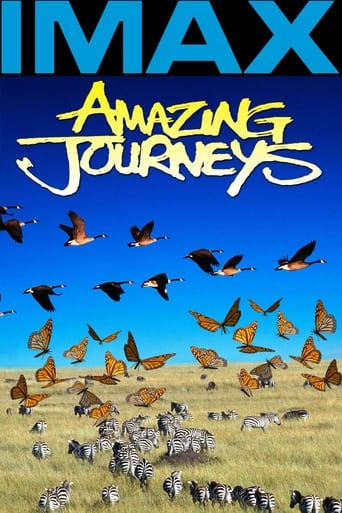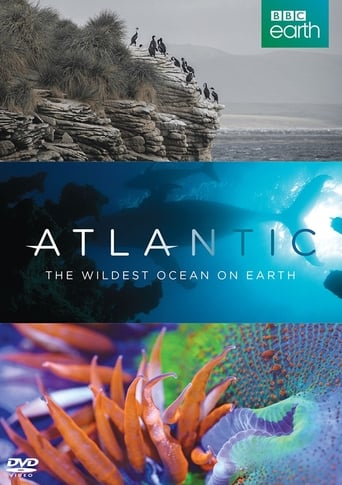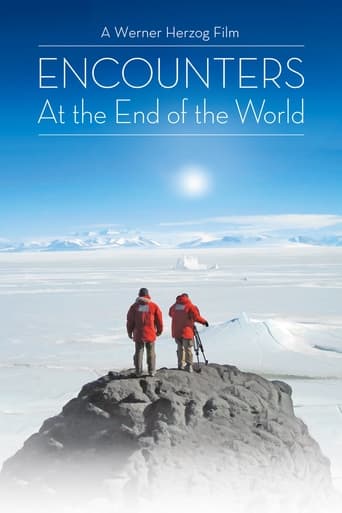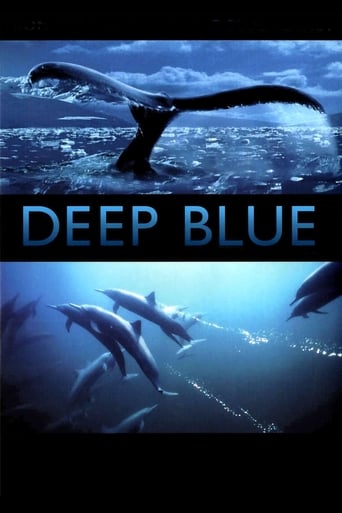
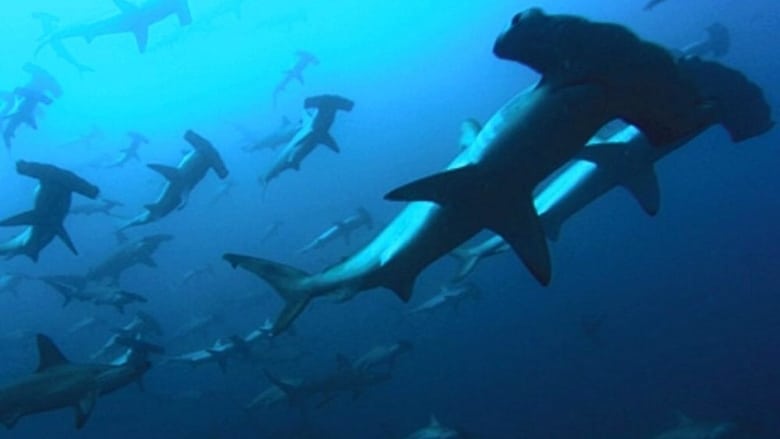
Deep Blue (2003)
Deep Blue is a major documentary feature film shot by the BBC Natural History Unit. An epic cinematic rollercoaster ride for all ages, Deep Blue uses amazing footage to tell us the story of our oceans and the life they support.
Watch Trailer
Cast


Similar titles
Reviews
The beginning of this documentary is devoid of credits. We see dolphins swimming and leaping in the open water and sea birds diving directly into the ocean to snatch a fish. The narrator (Pierce Brosnan) says, "This is a world of constant jeopardy, an endless cycle of birth, death, and renewal." Powerful waves crash into the rocky coast, where the sea lions return to give birth, but unwary seals become prey to predators (the black and white colored killer whales) in the shallows at high tide. Then again, the whales themselves risk being stranded there.More marine life is seen before the view shifts to the coral reefs, "a narrow band of sun-fed life only found in the shallows of the tropical seas." The skeletons of coral polyps – the smallest and most fragile of organisms – form the reef. The darkness is feeding time for some; the night-feeders with built-in sensors have no need of light. Fascinating and colorful sea creatures abound further below the ocean surface, but unfortunately most are not identified. There are poisonous jellyfish and manta rays. Just before the halfway mark of the film the scene moves to the Arctic (polar bears) and also Antarctic (penguins). In the Antarctic the temperature is seventy degrees below zero (-70°F) and the winds exceed one hundred miles per hour. The penguins gather speed in the cold waters before jumping out and landing on sheet ice. Meanwhile in the far north the polar bears search for nesting seals hidden in ice caves situated just below the surface. Thirty-ton gray whales travel six thousand miles to feed in the polar seas. After six hours of jostling, killer whales separate one unfortunate gray calf from its mother and move in when it is thoroughly exhausted. From the surface of the ocean we next enter a subterranean world, the deepest underwater area on the planet and where surface light does not penetrate. Seven miles deep (the Marianas Trench), it is a mystery world of perpetual night. It is a sparsely explored netherworld of odd life forms (again unidentified). The only light emanates from the undersea creatures themselves. Light is used as a lure to attract prey or as a decoy to confuse them. Poisonous hydrogen sulfide gas and boiling water spew forth in some areas. Yet, even near those settings some life forms exist. At film's end we hear that there are only a few thousand blue whales left on earth. The blue whales are earth's largest creatures by far.The narration is limited and the orchestral music appropriate. If you like nature documentaries, you will enjoy this one, although there are several lulls.
The footage was breathtaking, especially the deep sea scenes. I've seen shows and movies on the deep sea, but this was truly something special. It was almost unbelievable that BBC could capture these creatures that looked like something out of a very vivid imagination - nothing like I would expect any life forms to resemble. I couldn't help but get irritated at the orcas in the film, though, but I guess the portrayal was fair - they are on top of the food chain, and as such, they can eat anything they want. Anyway, I rated this movie somewhat poorly because the DVD cover showed a picture with a large emperor penguin, and a little baby penguin in front of it. I LOVED March of the Penguins, and I was really excited to see another filmmaker's take on the emperor penguins, even if it was not the focus of the whole movie. Yes, there were emperor penguins, but no little penguins! The penguin scene took up less than 5 minutes of the whole movie, and I felt cheated. I felt misled by the DVD cover, and I wanted to warn other penguin lovers out there - this is really not your movie if you want to have a good deal of penguin time.
This is an amazing movie about life in the ocean. I have never seen any movie that comes close in visual beauty. Every shot is astounding. It is as emotionally engaging as Bambi was for me when I saw it an age 5. It a labour of love. The amount of work that went into this film is staggering.Pierce Brosnan narrates sparingly. The movie generates awe and wonder, not intellectual understanding.The film is bursting with creatures I have never seen before, so fantastic and strange at times I felt I must be watching the creations of some mad 3D animator on LSD, or Fellini's ghost.You want to see this on the big screen.My only complaint is about the Foley artist, Brian Moseley, whose "natural" sound effects are positively silly, obviously not the actual sounds of the creatures or the ocean. Thankfully, the original score played by the Berlin Philharmonic covers up most of those ridiculous Star Trek swooshes and gurgling toilets.Only in retrospect do you wonder about how the cameramen created so many impossible shots. There is not a human or a human artifact anywhere in the movie. Nature is presented in pristine perfection.
When I sat down to watch this movie I thought I would be watching another wildlife programme but how wrong was I.The camera shots were out of this world and how they managed them I cannot imagine.The shots of the killer whales separating the baby whale from its mother defies logic and the Emperor penguins shooting out of the water like mini rockets has to be seen.The highlight of the show to me was the deep sea creatures who can generate their own light and the diversity of them can not be imagined.I thought The blue planet was a classic piece of photography but it has no comparison to this film which has both Aeriel and underwater shots of the highest magnitude.I would say to anyone who enjoys wildlife programmes to watch this film .





